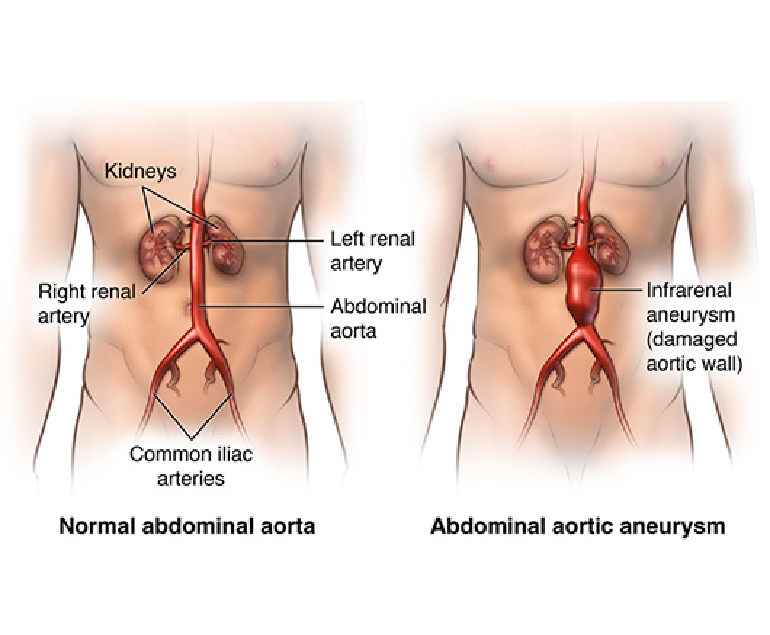Abdominal aortic aneurysm (AAA) is a potentially life-threatening condition characterized by the enlargement and weakening of the aorta—the main blood vessel that supplies oxygenated blood to the abdomen, pelvis, and lower extremities. AAA often develops slowly over time, and if left untreated, it can lead to a rupture, resulting in severe internal bleeding and potentially fatal consequences.
Causes
According to Dr. Ramji Mehrotra, India’s best heart surgeon, the exact cause of AAA is still unknown, but several risk factors have been identified. The primary risk factor is age, with individuals over 65 years being at higher risk. Other factors include smoking, high blood pressure, atherosclerosis (buildup of fatty deposits in the arteries), male gender, family history of AAA, and certain genetic disorders, such as Marfan syndrome and Ehlers-Danlos syndrome.
Symptoms
AAA often develops asymptomatically and is frequently detected incidentally during medical imaging tests conducted for unrelated conditions. However, as the aneurysm grows larger, it may cause symptoms such as:
- Abdominal pain or discomfort: Dull, persistent pain or a pulsating sensation in the abdomen or back.
- Swelling or a visible mass: A throbbing lump may be felt in the abdomen.
- Rupture symptoms: Sudden and severe pain, dizziness, rapid heartbeat, low blood pressure, and loss of consciousness may occur if the aneurysm ruptures.
Diagnosis
AAA can be diagnosed through various imaging techniques, including:
- Ultrasound: This non-invasive test uses sound waves to create images of the abdominal aorta, providing information about its size and structure.
- Computed Tomography (CT) Scan: This imaging technique produces detailed cross-sectional images of the aorta, allowing for precise measurement and evaluation of the aneurysm.
- Magnetic Resonance Imaging (MRI): MRI can provide additional information about the aorta and surrounding structures, especially in cases where CT scanning is contraindicated.
Treatment
The management of AAA depends on the size, growth rate, and overall health of the patient. Treatment options include:
- Watchful Waiting: Small aneurysms (less than 5.5 centimeters) that are not rapidly growing may be monitored regularly through imaging tests. Lifestyle modifications, such as quitting smoking and controlling blood pressure, are advised to reduce the risk of rupture.
- Surgery: For larger aneurysms or those growing rapidly, surgical intervention is often recommended. The two primary surgical procedures are open repair and endovascular aneurysm repair (EVAR).
- Open Repair: Involves surgically replacing the weakened section of the aorta with a synthetic graft.
- EVAR: A minimally invasive procedure where a stent graft is placed inside the aneurysm, providing support to the weakened vessel walls.
Conclusion
Dr. Ramji Mehrotra says that abdominal aortic aneurysm is a potentially life-threatening condition that requires careful monitoring and prompt management. Early diagnosis, regular screenings for at-risk individuals, and lifestyle modifications play a crucial role in preventing complications. It is important to consult with a doctor for accurate diagnosis, and appropriate treatment options.

